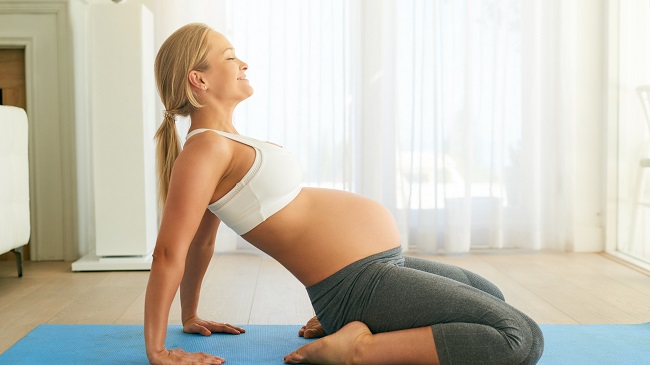Pregnancy is a remarkable journey characterized by profound physical, emotional, and spiritual transformations. While it’s a time of anticipation and joy, it also comes with its share of discomforts, particularly back pain and swelling. These challenges, though common, can significantly impact a woman’s well-being during this transformative period. Fortunately, pregnancy yoga emerges as a holistic and therapeutic approach to alleviate these discomforts, providing expectant mothers with the support and relief they need to navigate the journey of pregnancy with grace and vitality. In this comprehensive exploration, we delve into the intricate ways in which pregnancy yoga eases back pain and swelling, empowering women to embrace the miracle of motherhood with strength and serenity.
Contents
Understanding the Physiological Changes of Pregnancy
Pregnancy initiates a cascade of physiological changes within a woman’s body, all aimed at nurturing and supporting the growing fetus. These changes encompass hormonal fluctuations, weight gain, alterations in posture, and increased pressure on the musculoskeletal system. While these adaptations are essential for the health and development of the baby, they often lead to discomfort and pain, particularly in the back and lower extremities.
Back pain is one of the most common complaints during pregnancy, affecting approximately 50-70% of expectant mothers at some point. The increasing weight of the uterus, coupled with hormonal changes that loosen ligaments and joints, places additional strain on the muscles and ligaments of the back. Additionally, changes in posture and body mechanics, such as an exaggerated lumbar curve and a shift in the center of gravity, further contribute to back pain during pregnancy.
Swelling, or edema, is another prevalent issue experienced by pregnant women, primarily affecting the feet, ankles, and hands. This swelling arises from increased blood volume and pressure on the blood vessels, causing fluid retention in the body’s tissues. While mild swelling is normal during pregnancy, excessive or sudden swelling can be indicative of a more serious condition such as preeclampsia, necessitating medical attention.
Understanding Pregnancy Yoga
Pregnancy yoga, also known as prenatal yoga, is a specialized form of yoga tailored to meet the unique needs of expectant mothers. Rooted in traditional yoga practices, pregnancy yoga incorporates modified poses, breathing techniques, and relaxation exercises to support women throughout their pregnancy journey. It focuses on fostering physical strength, flexibility, and emotional well-being, preparing women for childbirth and motherhood.
Gentle Stretching and Strengthening
One of the primary therapeutic mechanisms of pregnancy yoga in alleviating back pain is its emphasis on gentle stretching and strengthening exercises. The practice incorporates a series of asanas or poses that target key muscle groups, including those in the back, abdomen, and pelvis. These poses are carefully selected to provide relief from tension and discomfort while promoting flexibility and strength.
For instance, the Cat-Cow stretch, a dynamic movement that alternates between arching and rounding the back, helps to mobilize the spine and relieve stiffness in the back muscles. Similarly, the Child’s pose provides a gentle stretch to the lower back and hips, alleviating tension and promoting relaxation. These poses are often performed mindfully, with a focus on breath awareness and body alignment, enhancing their therapeutic benefits.
In addition to stretching, online pregnancy yoga classes incorporate strengthening exercises to support the spine and pelvis. Poses such as the Warrior series and Chair pose help to build strength in the legs, core, and back muscles, providing stability and support. Strengthening these muscle groups not only helps to alleviate back pain but also improves posture and body mechanics, reducing the risk of injury.
Breath Awareness and Relaxation Techniques
Breath awareness and relaxation techniques are integral components of pregnancy yoga, offering profound benefits for both physical and emotional well-being. Deep breathing exercises, such as diaphragmatic breathing and ujjayi breath, help to calm the nervous system and reduce stress levels. By practicing conscious breathing, expectant mothers learn to cultivate a sense of inner calm and relaxation, which can be particularly beneficial in alleviating back pain and swelling.
Furthermore, pregnancy yoga incorporates relaxation techniques such as guided imagery and progressive muscle relaxation to promote deep relaxation and stress relief. These practices help to release tension held in the body, allowing for greater ease and comfort. As a result, expectant mothers experience reduced muscle tension, improved sleep quality, and enhanced overall well-being.
Pelvic Alignment and Stability
Pelvic alignment and stability play a crucial role in maintaining optimal posture and reducing back pain during pregnancy. Pregnancy yoga focuses on exercises that promote pelvic awareness and strengthen the muscles supporting the pelvis. Poses such as the Pelvic Tilt and Squat help to stabilize the pelvis and improve alignment, reducing strain on the lower back.
Additionally, pregnancy yoga incorporates pelvic floor exercises, known as Kegels, to enhance pelvic floor strength and control. Strong pelvic floor muscles are essential for supporting the growing uterus, preventing urinary incontinence, and facilitating childbirth. By practicing pelvic floor exercises regularly, expectant mothers can reduce the risk of pelvic floor dysfunction and associated discomforts.
Circulation and Fluid Balance
In addition to addressing back pain, pregnancy yoga can help alleviate swelling by promoting circulation and fluid balance in the body. Certain yoga poses, such as Legs-Up-the-Wall pose and Supported Bridge pose, encourage venous return from the lower extremities, reducing fluid buildup in the feet and ankles. Gentle inversion poses, such as Downward-Facing Dog and Shoulder Stand, can also help to alleviate pressure on the blood vessels and promote lymphatic drainage.
Furthermore, the rhythmic movements and deep breathing associated with yoga help to stimulate the lymphatic system, which plays a key role in removing excess fluid and waste products from the body. By supporting lymphatic circulation, pregnancy yoga helps to maintain fluid balance and reduce the severity of swelling, keeping discomfort at bay.
The Emotional and Psychological Benefits of Pregnancy Yoga
In addition to its physical benefits, pregnancy yoga offers a range of emotional and psychological benefits for expectant mothers. The practice provides a safe and nurturing space for women to connect with their bodies, their babies, and their breath. Through mindfulness and self-awareness practices, such as meditation and visualization, women cultivate a deeper sense of presence and acceptance, fostering emotional resilience and well-being.
Moreover, pregnancy yoga fosters a sense of community and support among expectant mothers, providing an opportunity to share experiences, insights, and challenges. Group classes offer a supportive environment where women can connect with others who are on a similar journey, creating bonds that extend beyond the yoga mat. This sense of camaraderie and solidarity can be invaluable in navigating the ups and downs of pregnancy and motherhood.
Practical Considerations for Practicing Pregnancy Yoga
While pregnancy yoga offers numerous benefits for expectant mothers, it’s essential to approach the practice with mindfulness and caution, particularly during the different stages of pregnancy. Here are some practical considerations to keep in mind:
Consult With A Doctor: Before starting any exercise program during pregnancy, it’s crucial to consult with a healthcare provider to ensure it’s safe for you and your baby. Your doctor can offer personalized recommendations based on your medical history, stage of pregnancy, and any pre-existing conditions.
Choose A Qualified Instructor: When practicing pregnancy yoga, it’s important to choose a qualified instructor who has experience working with expectant mothers. Look for instructors who have completed specialized training in prenatal yoga and are knowledgeable about the unique needs and concerns of pregnant women.
Listen To Your Body: During pregnancy, your body undergoes significant changes, and it’s essential to listen to its cues and honor its limitations. Avoid pushing yourself too hard or overexerting yourself during yoga practice. Modify poses as needed to accommodate your changing body, and don’t hesitate to take breaks or rest when necessary.
Stay Hydrated And Nourished: Proper hydration and nutrition are essential during pregnancy, especially when engaging in physical activity such as yoga. Drink plenty of water before, during, and after your yoga practice to stay hydrated. Additionally, eat a balanced diet rich in nutrients to support your body and your baby’s development.
Practice Relaxation Techniques: In addition to physical poses, make time for relaxation techniques such as deep breathing, meditation, and guided imagery. These practices can help reduce stress, promote relaxation, and enhance overall well-being during pregnancy.
Conclusion
In conclusion, pregnancy yoga offers a comprehensive and holistic approach to alleviating back pain and swelling during pregnancy, empowering women to embrace the journey of motherhood with strength and vitality. Through gentle stretching, strengthening, breath awareness, and relaxation techniques, online yoga classes address the underlying causes of discomfort while promoting physical, emotional, and psychological well-being.
By incorporating pregnancy yoga into their routine, expectant mothers can cultivate a deeper connection with their bodies, their babies, and their breath, fostering a sense of empowerment and resilience as they navigate the joys and challenges of pregnancy. As a supportive and nurturing practice, pregnancy yoga serves as a beacon of light, guiding women on their journey to motherhood with grace and serenity.









